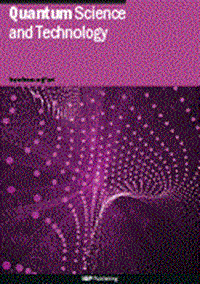Continuous variable structured collision models
IF 5
2区 物理与天体物理
Q1 PHYSICS, MULTIDISCIPLINARY
引用次数: 0
Abstract
Quantum collision models allow for the dynamics of open quantum systems to be described by breaking the environment into small segments, typically consisting of non-interacting harmonic oscillators or two-level systems. This work introduces structure within these environmental units via spring-like interactions between N coupled oscillators in a ring structure, initially prepared in a thermal state. Two models of interest are examined. The first highlights a case in which a continuous time evolution can be obtained, wherein the system interacts with the environment via a beam-splitter-like, energy-preserving, interaction. The resulting dynamics are analogous to those due to interactions with unstructured units prepared as squeezed thermal states. The second model highlights a case in which the continuous time limit for the evolution cannot be taken generally, requiring instead discrete-time propagation. Special cases in which the continuous time limit can be taken are also investigated, alongside the addition of a secondary environment to induce a steady state. The first and second laws of thermodynamics are verified for both examples.连续变结构碰撞模型
量子碰撞模型允许通过将环境分解成小段来描述开放量子系统的动力学,通常由非相互作用的谐波振子或两能级系统组成。这项工作通过环形结构中N个耦合振荡器之间的弹簧状相互作用引入了这些环境单元中的结构,最初是在热状态下制备的。研究了两种感兴趣的模型。第一种强调了一种可以获得连续时间演化的情况,其中系统通过类似分束器的能量守恒相互作用与环境相互作用。所得到的动力学类似于那些由于与非结构化单元的相互作用而制备的压缩热态。第二个模型强调了一种情况,在这种情况下,进化的连续时间限制不能被普遍接受,而是需要离散时间传播。在可以采取连续时间限制的特殊情况下,除了添加二次环境以诱导稳态外,还研究了这种情况。这两个例子都验证了热力学第一和第二定律。
本文章由计算机程序翻译,如有差异,请以英文原文为准。
求助全文
约1分钟内获得全文
求助全文
来源期刊

Quantum Science and Technology
Materials Science-Materials Science (miscellaneous)
CiteScore
11.20
自引率
3.00%
发文量
133
期刊介绍:
Driven by advances in technology and experimental capability, the last decade has seen the emergence of quantum technology: a new praxis for controlling the quantum world. It is now possible to engineer complex, multi-component systems that merge the once distinct fields of quantum optics and condensed matter physics.
Quantum Science and Technology is a new multidisciplinary, electronic-only journal, devoted to publishing research of the highest quality and impact covering theoretical and experimental advances in the fundamental science and application of all quantum-enabled technologies.
 求助内容:
求助内容: 应助结果提醒方式:
应助结果提醒方式:


